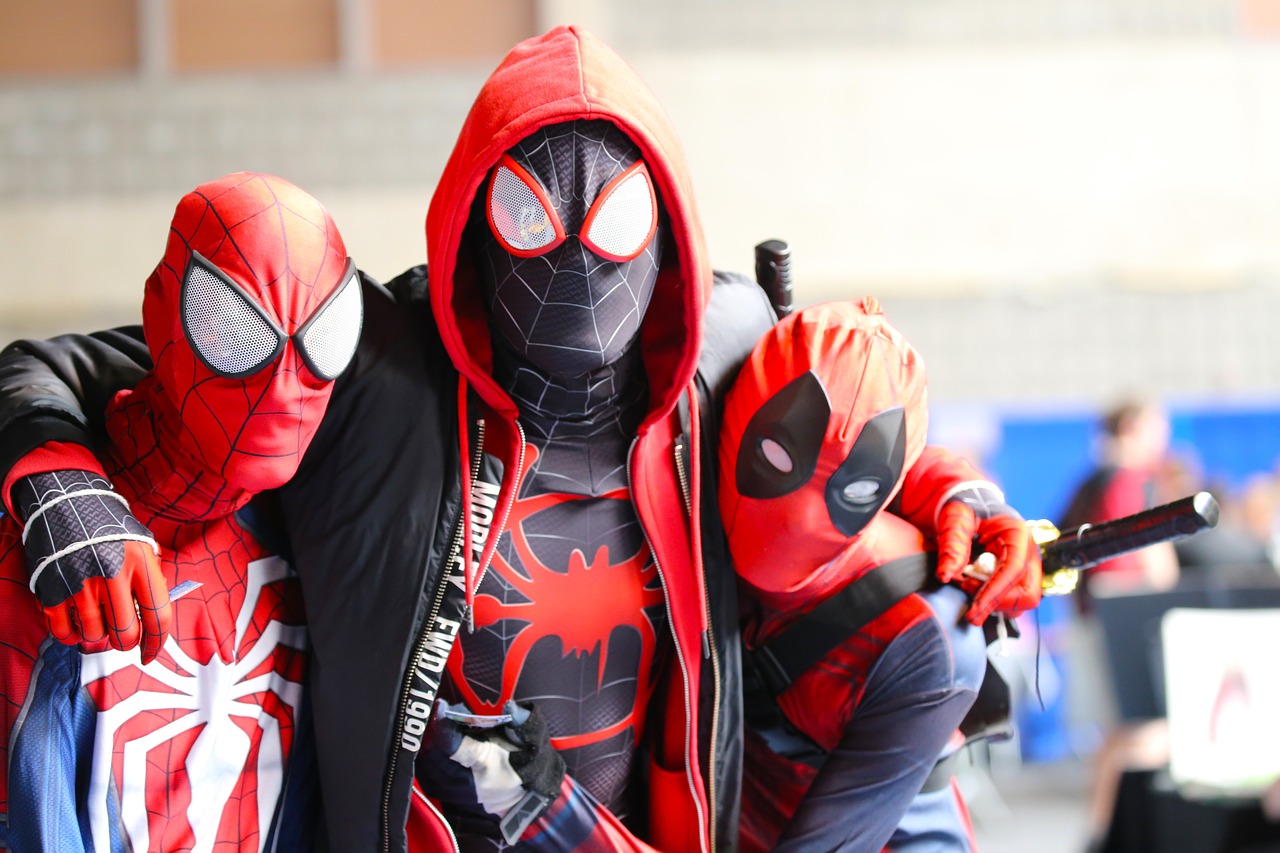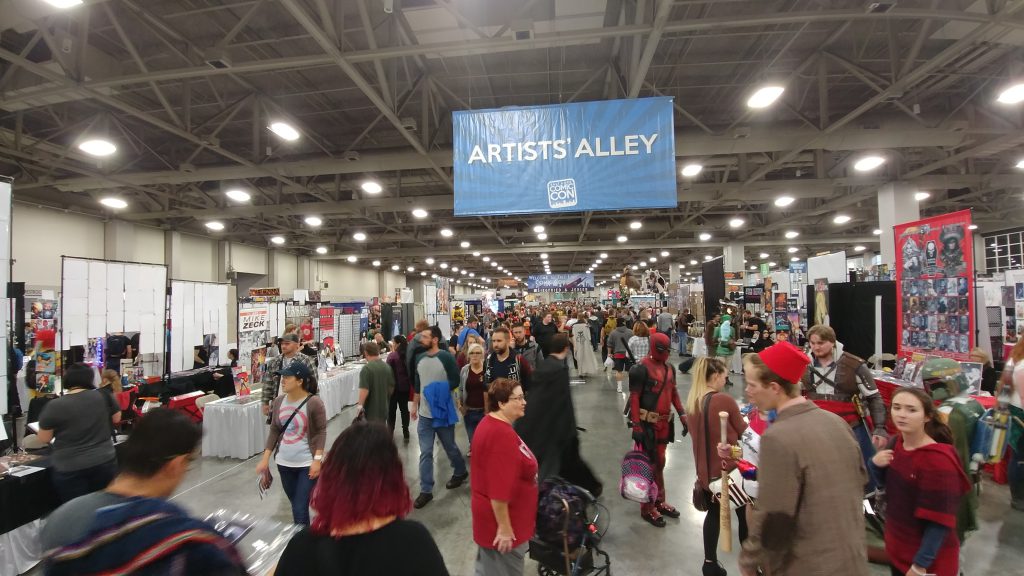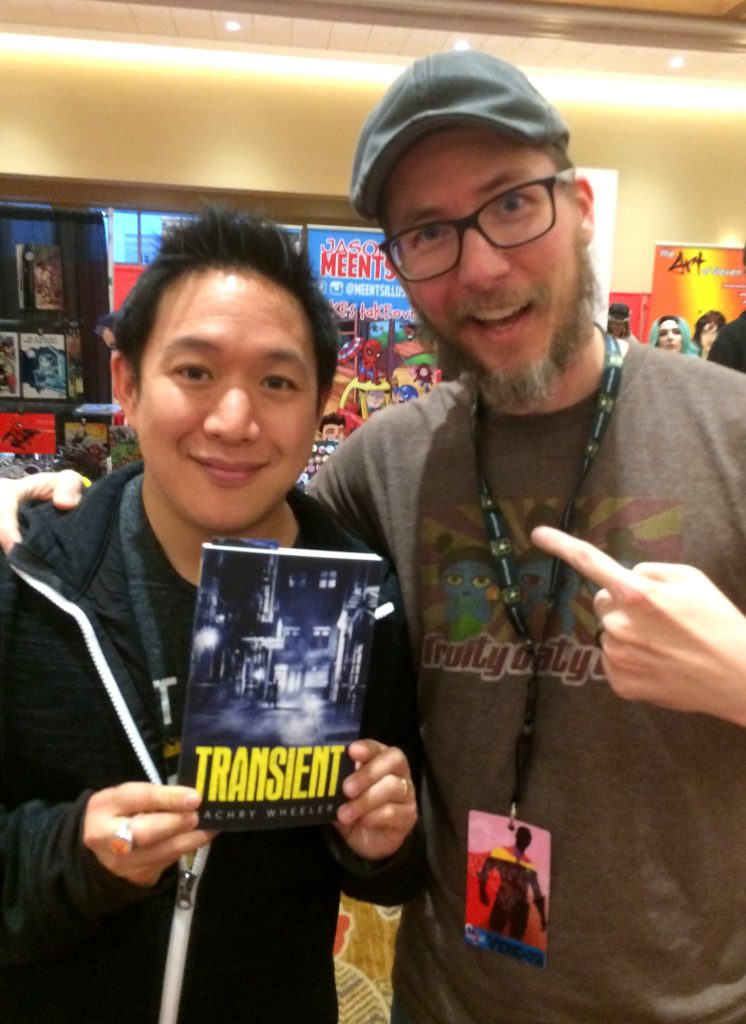As an author, what if I told you that there are places in the world where your core audience gathers in large numbers to buy your books? They listen to your pitch, ask fun and interesting questions, and even thank you for your time. Seems like a pipe dream, perhaps an elaborate prank. But at the risk of sounding like a charismatic cult leader, yes, they do exist. And I can show you where they are. And for a small donation …
In all seriousness, this isn’t fantasy, but it actually helps if you write fantasy. Authors have a remarkable tool available to them that they should be milking for all its worth. I am talking, of course, about comic conventions.

What, kind sir, is a comic convention?
Don’t think about it too hard. It’s just a place where geeks and nerds gather to indulge in geeky and nerdy things. There are celebrity guests, discussion panels, costume contests, and booths filled with colorful merchandise. That last one is where you come in.
Most comic cons separate their merchandise booths into two distinct sections: Vendors and Artist Alley. Vendors sell anything and everything related to geek culture; prints, toys, games, apparel, knick-knacks, and yes, even the occasional comic book. The Artist Alley is where artists gather to sell original works. You qualify as an author and here’s the best part: the Artist Alley is simultaneously the most popular and cheapest area in the entire convention. Anyone can sell a Deadpool bobblehead, but not everyone can sell an original print of Deadpool playing with his own bobblehead.
This is why the Artist Alley is so powerful to authors. Your books qualify as original works, so you can join the army of artists selling their art. Promoters love the Artist Alley because comic fans love comic artists. The assumption is also made that artists, being artists, are struggling to pay their rent. Thus, booths are offered at deep discounts, often half the price of vendors.

Which brings us to the million dollar question. How much are the booths? Rest assured, they are nowhere near a million dollars (unless you attend the massive San Diego Comic Con, but that’s a whole other can of nerds). Typically, booths range from $50 to $500, and that’s for the entire weekend. You also get free passes to the event, your own table with chairs, and a cool vendor badge to distinguish you from the peons.
So why the big swing in prices? Well, some cons are more popular than others. Community events tend to be cheap, easy, and modestly attended. On the flip side, major cons in major cities offer access to a much larger market. The bigger the crowd, the bigger the cost, but do not let the price points rattle you. Fans attend cons with a burning desire to buy stuff. It’s not like you’re hocking books in the streets. With the right attitude and a good elevator pitch, you will almost certainly cover your expenses and earn a healthy profit.
As a simple example, I purchased an Artist Alley booth at a mid-level convention shortly after the release of my debut novel Transient. Booths were priced at $200 for the weekend, a great value for the crowd size. I brought 80 copies of the book and a bunch of promo freebies (very important, will discuss those later). I priced the books at $10 each and sold 78 of them. That’s $780, which more than covered my booth and print costs. I wasn’t even trying to make a profit. I just wanted to promote my works and, best case scenario, break even.
Sounds like a barrel of fantastic awesomeness. So what’s the catch, con man?
Yes, there is a catch. A very, very big catch that will be a horrifying deal-breaker for many authors. You must, and I cannot stress this enough … be personable.
I can hear the shrieks of hysteria, but this is non-negotiable. The single worst thing you can do as a booth jockey is be shy. You have a sea of target clientele walking by you at all times. If you’re afraid to talk to them, then you have no business being there. I cannot tell you how many times I have walked by an artist booth only to see them facedown in their smartphone. For pity’s sake, engage your audience.
Okay, so you’ve made peace with the necessary extroversion. Now it’s time to build a killer booth. Comic cons are energetic events filled with pulsing colors, neon spandex, and scantily clad cosplayers. You must stand out, and dropping books on a table won’t get you very far. You need banners, posters, cards, freebies, props, whatever it takes to say, “Look at me! I’m a cool author with compelling stories.”
As an example, one of my favorite things to do is cosplay as a popular character from my genre, which can hook potential readers as fellow fans. I write humorous science fiction, so on the busiest day of the con, I sometimes dress up as Jayne Cobb from Firefly. At one event, I sold several books after singing The Hero of Canton with a Serenity ensemble.

A few notes on freebies: they can be literally anything related to you and your work. I always have a ton of business cards spread out on the table with book covers on one side and my author info on the other. Pro tip: don’t overdo the personal details. Your name, website, and media handles are more than enough. I get all my cards and posters from VistaPrint, an easy and affordable online option. Get creative. I used to be in rock bands once upon a time, so I always bring a stack of old CDs to give away.
Comic cons can be insanely rewarding (and highly profitable) if you plan them right, but you have to be smart about it. Some other things to consider:
- You must be able to take credit cards. You live in a digital world, so leverage it. If you manage to hook a reader, but can’t take their preferred method of payment, then you should slap yourself and go hide under a rock. I use Square, an easy option that allows you to swipe cards on your smartphone.
- Power is also an issue because you want your phone up at all times for sales and pics. I always bring a portable USB charger, which you can find on Amazon for cheap.
- Get your own black tablecloth. Some events are more prepared than others and it looks unprofessional to have books stacked on a naked banquet table. Even if you don’t need it, the cloth doubles as a booth cover between sessions. It’s a handy accessory.
- Announce your booth location ahead of time and post during the event to drive traffic. One of my favorite moments was when Ming Chen snatched a copy of Transient. He posed for a pic, which I immediately shared to boost interest. That’s right, celebrity endorsements! You never know what will happen, so be prepared for anything.
And so, that’s a decent summary of what to expect from comic cons as an author. They are super fun, offer great networking opportunities, and double as meet n’ greets for fans of your works. If planned right, they can be a vital part of your promo arsenal.

Ming Chen with his copy of Transient
Frequently Asked Questions
Many thanks to everyone for all the emails and follow-up questions. I am thrilled to hear that you consider this a valuable post. Thus, I decided to consolidate a list of FAQs.
How much should I price my books?
Whatever you do, don’t get greedy. Always remember that the primary reason you are there is to market, not sell. If I don’t move a single book, but give out 100 business cards, I still consider that a successful convention.
That said, $10 is my magic number. Plus, whole numbers attract impulse buys. At that price, I usually manage to cover my booth and printing costs. In short, use good judgement. If you’re selling a 120K-word tome, then you can probably ask for $20. But, if you’re selling a 60K-word YA novel, asking $20 will destroy your sales potential.
Pro tip: include sales tax in a whole price. Nobody likes a hidden charge.
And speaking of tax, every state and region has a different method of reporting sales. You will likely need a business license for each state you work. In addition, you will also need to report your income on various schedules depending on how much you make (monthly, semi-annual, etc.). It’s a giant pain in the crack, but a necessary evil in order to work the con circuit.
How many books should I bring?
It depends on a variety of factors. How big is the convention? Are you selling a book series, stand-alone novels, or both? You need to bring more of book one in a series because many readers like to try the first before committing to the rest.
That said, I rarely sell more than 100 physical books at a convention. For large events, I bring 40 copies of the first book and 20 each of the sequels. For small events, I reduce it by half.
Pro tip: offer bundle deals. Customers love discounts and will often buy more to get them. For example, I sell my books at $10 each, but I also offer discounts on the series ($25 for all three books). The majority of my sequel copies are sold in bundles.
Wow, there are a ton of conventions. Which one should I choose?
Start small and work your way up. If you’ve never done a con before, don’t tackle the big ones because you need to hone an expectation. Try a small local event first. You need to figure out what works and what doesn’t. And if you’ve never been to a con, I recommend attending a few as a fan before manning a booth. Get a feel for how vendors interact with customers. Take notes, snap pics, have fun.
Engaging people is hard for me. How can I get over it?
Fear not, Padawan. You’re not giving a speech at the UN, so don’t let it intimidate you. You’re among friends who want to talk about the same stuff you do. That’s the whole point of being there. But, it’s up to you to initiate that conversation. Once you get the hang of it, it becomes second nature. Plus, there’s a lot of camaraderie among vendors, so strike up chats with your booth neighbors. They’ll make you feel right at home (and give you pro tips).
What if I need to change something mid-convention?
You will, so plan for it. You’ll be amazed by all the tiny details you never thought to consider. As a simple example, I have hanging banners that flank my booth. But at one con, my booth was directly below an AC vent. The posters swayed back and forth on the stands, so I needed to secure them. Luckily, I had brought some tape. I always bring a small tackle box full of pins, clips, tape, adapters, etc. It’s an old habit I picked up from my days in music. Do not assume that the con will provide.
Also, do not rely on a single pitch. Your audience will change throughout the con. The early hours are typically family-friendly, while the evening hours are much more saucy. You have to mold to the environment. For example, I keep a folder of different signage options, which allows me to cater to the current audience. I don’t hang the signs themselves, I use acrylic stands and swap out as needed.
I tried a con booth and barely sold anything. What gives?
Cons are hit and miss by nature and not all of them will be profitable. A myriad of factors go into making a con financially successful. But, that’s not the point. Remember that you’re there to market first and foremost. Did you engage your audience? Did you build contacts? Did you give away a bunch of cards and freebies? If the answer is no, then the con is not to blame. Time to re-evaluate your approach.
I can’t afford booths at big cons. What are my options?
It’s not uncommon for authors to share booths in order to cut costs. This is especially true for writers groups. When the big cons roll around, a few of my author friends may get together to share the expense, which can add up quick when you throw in hotels, travel, etc. Sometimes the organization itself will share the cost in order to gain exposure. Plus, it’s always nice to have friends there to alleviate the mental stress (and cover bathroom breaks). Sure, your space is smaller and it might affect your sales a bit, but you gain access to the most valuable part: a massive sea of target readers.


